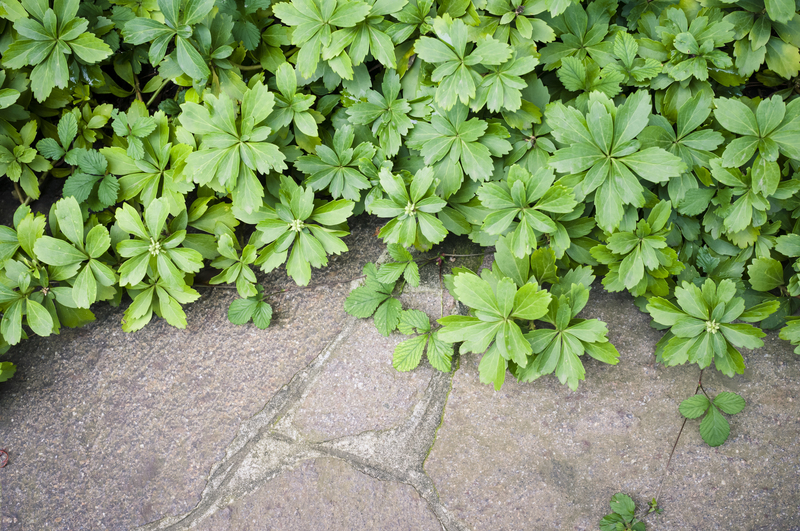Winter Care Tips for Thriving Garden Plants
Posted on 16/06/2025
Winter Care Tips for Thriving Garden Plants
When winter arrives, garden lovers worry about the health and survival of their beloved plants. Cold temperatures, frost, snow, and shorter days can all have negative impacts, but with proper strategies, your garden can not only recover but even thrive during the chillier months. This comprehensive guide presents a wide range of winter care tips for thriving garden plants so you can enjoy a vibrant, resilient outdoor space year-round.

Understanding the Challenges of Winter Gardening
Before learning how to care for garden plants during winter, it's crucial to understand the unique challenges the season brings. These include:
- Freezing temperatures: Many plants suffer cellular damage or dieback in severe cold.
- Frost: Sudden frosts can shock or kill unprotected plants overnight.
- Poor light: Shorter days and lower sun intensity reduce photosynthesis.
- Dehydration: Cold can reduce plants' ability to draw water from frozen soil.
- Pest and disease pressure: Damp conditions may foster fungal diseases.
Knowing what your garden is up against allows you to plan effective winter protection strategies.
Essential Winter Plant Protection Strategies
1. Mulching: Your Garden's Winter Blanket
Mulching is one of the simplest and most effective winter garden care tips. By creating a protective barrier, mulch:
- Insulates plant roots from extreme temperature changes.
- Retains soil moisture to prevent dehydration.
- Reduces weed growth during warm spells.
Apply a two to four-inch layer of organic mulch (like shredded bark, leaves, or straw) around your plants in late fall. Avoid piling mulch directly against plant stems or trunks, which can cause rot.
2. Watering Wisely During Winter
It's a myth that plants don't need water in winter. In reality, winter care for garden plants often means providing supplemental watering during dry spells, as plants can suffer from dehydration when the ground is frozen. Tips for effective winter watering:
- Water early in the day when temperatures are above freezing.
- Focus on new plantings and evergreens, which are more susceptible to winter drought.
- Reduce frequency but ensure deep soaking when you do water.
Avoid wetting leaves late in the day, as extra moisture can freeze overnight and cause damage.
3. Protecting Roots: Raised Beds & Containers
Garden beds and container plants are particularly vulnerable to freezing. Roots in pots or raised beds are more exposed than those in the ground. Winter plant survival tips for container gardening include:
- Move potted plants to a sheltered location, such as a garage, shed, or enclosed porch.
- Wrap containers with insulating materials like burlap, bubble wrap, or old blankets.
- Elevate pots off the ground to avoid direct contact with freezing surfaces.
Best Practices for Specific Plant Types
Perennials
- Trim back dead foliage after the first killing frost, but don't cut too far back; stems and leaves can provide insulation.
- Apply mulch generously to protect crowns and roots.
- Label locations clearly if plants die back completely, to avoid disturbing them in spring.
Annuals
- Remove spent annuals and compost healthy plant material to reduce pests and disease.
- Consider growing cold-hardy annuals (e.g., pansies, ornamental kale) for winter color.
Evergreens
- Water well until the ground freezes to help evergreens retain moisture.
- Shield from drying winter winds with burlap wraps or windbreaks.
- Brush off heavy snow gently to prevent branch breakage.
Tender Plants and Bulbs
- Dig up bulbs like dahlias, cannas, and gladiolus before the first hard frost, allow them to dry, and store in a cool, dry place.
- For tender perennials, bring indoors or into a protected environment.
Frost and Freeze Protection Solutions
Using Plant Covers and Cloches
For winter protection of garden plants during sudden cold snaps, physical barriers can be key:
- Use frost cloths, old sheets, or horticultural fleece to cover sensitive plants overnight.
- Employ plastic row covers or portable cold frames for vegetable beds.
- Individual glass or plastic cloches can safeguard young or delicate plants.
Remove covers during the day if temperatures rise to allow air flow and prevent overheating.
Windbreaks and Microclimates
Strong winter winds can dry out or damage plants. Erect temporary windbreaks using:
- Burlap screens supported by stakes.
- Temporary fences or walls of straw bales.
Planting evergreen hedges or shrubs can also create natural microclimates that protect vulnerable plants from extremes.
Winter Garden Preparation and Clean-Up
Soil Health and Amendments
Healthy soil is the foundation for winter-hardy plants. In late fall, add a layer of compost or aged manure around your beds. This enriches the soil as it slowly decomposes over winter, and helps improve drainage--a key defense against root rot. Test soil pH and amend if necessary, as acidic or alkaline soils can affect nutrient uptake during dormant periods.
Pruning Practices
Prune dead, diseased, or crossing branches on trees and shrubs before winter sets in to reduce breakage from ice and snow. Hold off on heavy spring pruning of most plants until after winter to avoid stimulating tender new growth.
Stay Vigilant About Pests and Disease
Clear away fallen leaves, dead plants, and other debris where pests and fungi overwinter. Inspect evergreens periodically for scale, mites, or fungal spots. Early intervention helps prevent major outbreaks come spring.
Maximizing Plant Growth Indoors During Winter
Bringing Plants Inside
- Transition tender houseplants and container plants indoors gradually in early fall to avoid shock.
- Place near windows with the brightest natural light or use grow lights for healthy growth.
- Reduce fertilizer and watering frequency, as plants use fewer nutrients during dormancy.
Creating a Humid Environment
Indoor heating causes dry air. Group plants together and use trays filled with water and pebbles to maintain humidity. Lightly mist leaves as needed.
Monitor for Pests
Winter garden plant care includes checking indoor foliage for spider mites, aphids, or mealybugs that thrive in dry, warm conditions. Isolate infested plants and use gentle insecticidal soap sprays as necessary.
Winter Care for Vegetable Gardens
- Sow cold-hardy crops like kale, spinach, and Swiss chard under row covers or inside cold frames for an extended harvest.
- Mulch garlic, onions, and overwintering root crops for winter survival.
- Remove plant residues and enrich soil with organic matter to prepare for spring planting.
Winter Plant Care Tips by Hardiness Zone
Knowing your USDA hardiness zone or local climate zone will help you determine the best options for winter plant care. For example:
- Zones 3-5: Emphasize deep mulching, windbreaks, and moving containers indoors.
- Zones 6-7: Monitor for mild thaws and water as needed during dry periods.
- Zones 8-10: Protect against occasional severe cold snaps and continue light gardening throughout winter months.

Spring Recovery: Setting Up Your Garden for Success
- Gradually remove mulch as temperatures warm to avoid fungal growth.
- Prune winter-damaged branches and dead material when new growth appears.
- Test soil and apply balanced fertilizers to support vigorous spring growth.
- Divide or transplant perennials as needed for a thriving garden all year.
Conclusion: Enjoy Thriving Plants All Winter Long
*With planning, care, and a few smart strategies, your garden can remain healthy and attractive during even the harshest months.* By implementing these comprehensive winter care tips for thriving garden plants, you'll not only protect your landscape from winter's worst, but you'll also set the stage for a lush, vibrant explosion of growth as soon as spring returns. Your winter-ready garden is just a few steps away!
Key Takeaways for Winter Garden Success
- Mulch deeply to insulate roots and conserve moisture.
- Water wisely and avoid letting soil dry out completely.
- Shield sensitive plants with covers or windbreaks.
- Clean up garden debris to minimize pests and disease.
- Bring tender plants indoors before frost hits.
- Enrich soil and prune at the right time for optimum spring growth.
By following these winter gardening tips, both novice and experienced gardeners can enjoy healthy, thriving plants and a garden that endures all year long.



